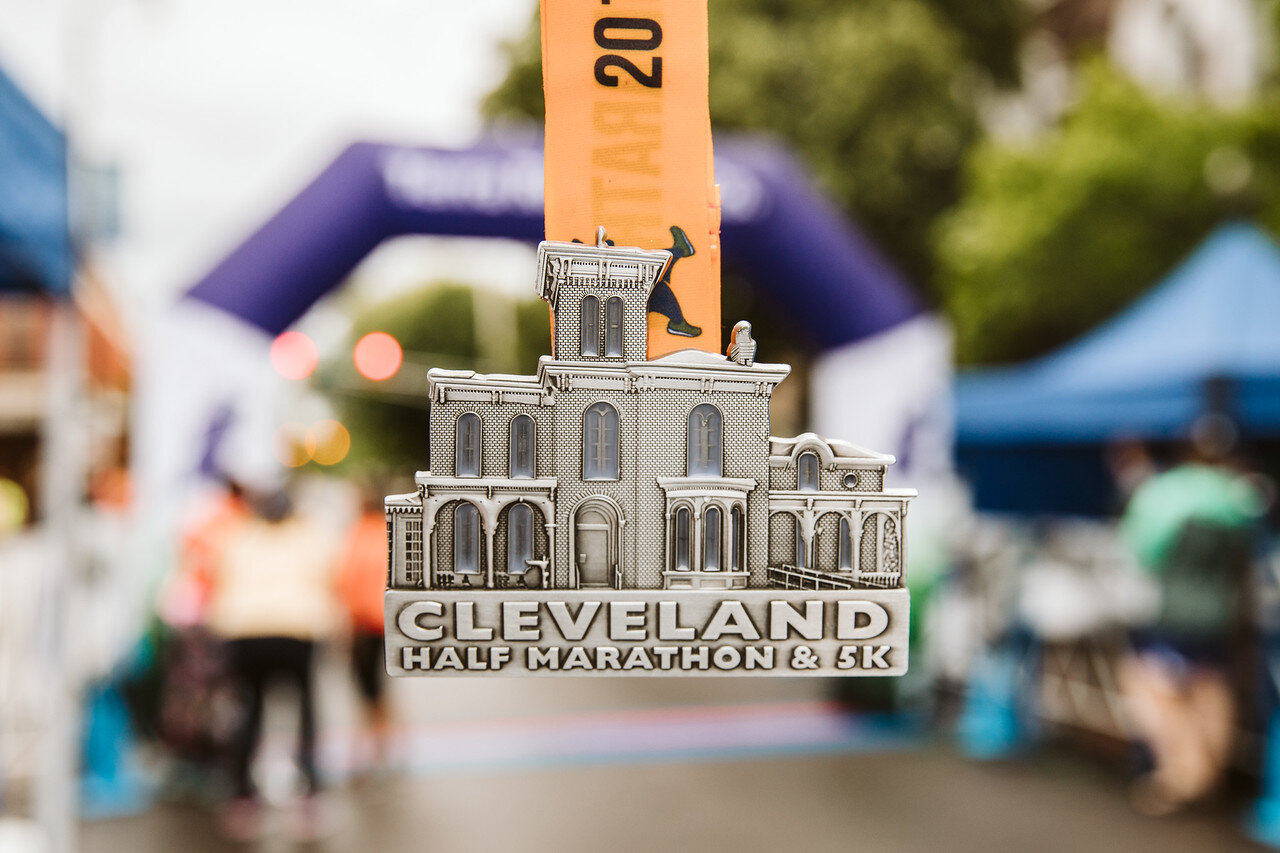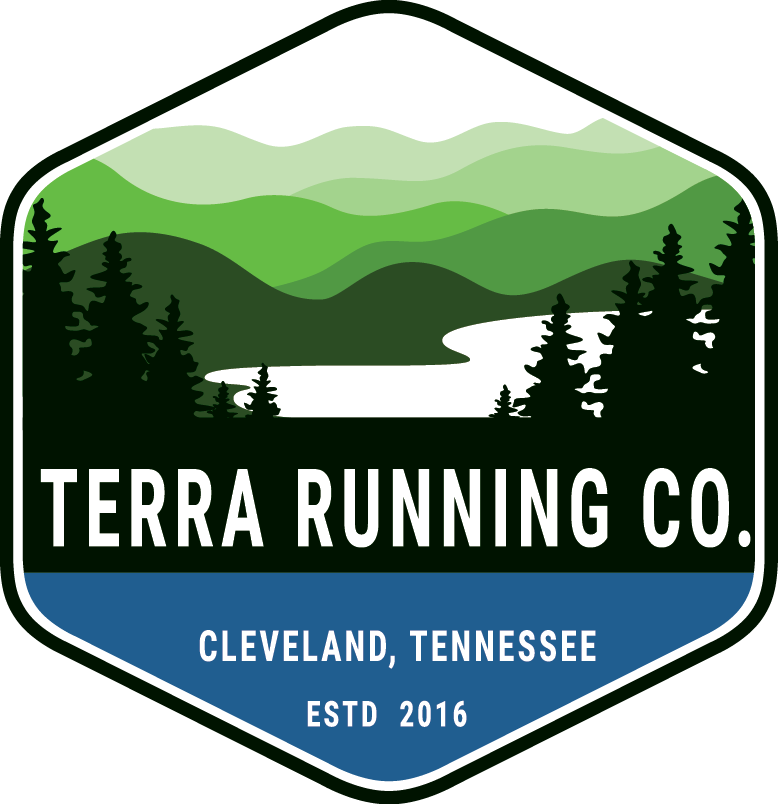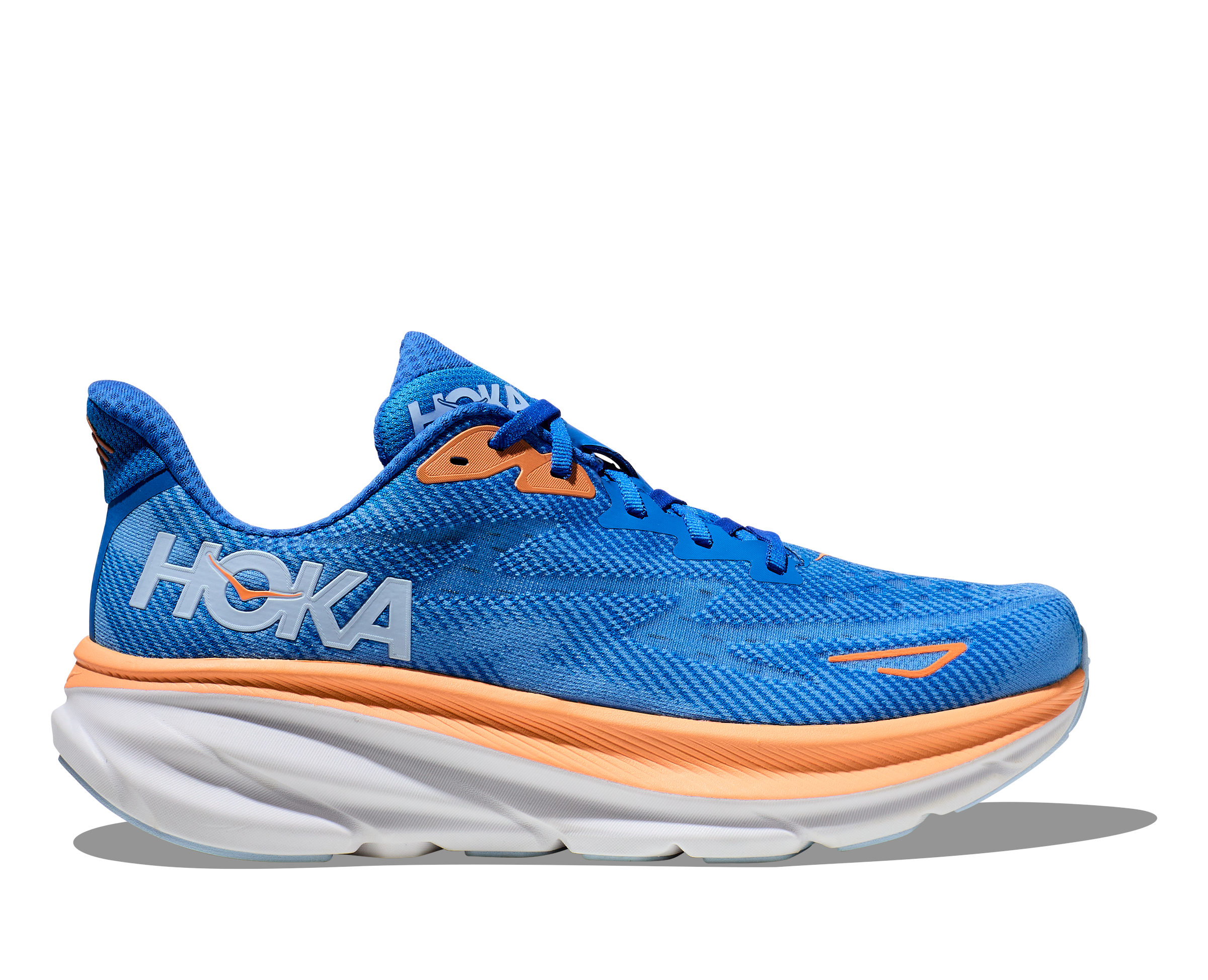
Which Hoka Model is Right for You?
The Clifton 9
Maybe you have heard from friends or family members about how incredible Hoka shoes are. Maybe you’ve seen people at work wearing them and wondered, “Is that for me?”
It is true that Hoka shoes are incredibly popular across ages and for a variety of uses; from running, to work wear, to everyday life, Hokas seem to be ubiquitous. And for good reason! These shoes are cushioned, supportive, and light; Three things that are crowd-pleasers for almost everyone. But despite the basic things that make a Hoka a Hoka, there are quite a few differences across models. Do you need the max support of the Gaviota? Or the arch of the Clifton? The speed of the Mach or the utility of the Challenger? Read on to learn about some of the basics of the models we carry at Terra Running Company, but be sure to come in and let us fit you for a pair! Reading about the differences between shoes is great but it is never a substitute for actually getting the shoe on your foot and feeling if it is right for you.
Neutral Shoes
Neutral shoes are for runners and walkers that don’t overpronate (roll excessively inward when they walk or run). It is, however, important to note that there could be scenarios when you might still want to try one of these shoes even if you overpronate. This is another reason we encourage you to come and let us fit you!
The Bondi 8 has ample cushioning
Clifton 9: The Clifton 9 is one of Hoka’s flagship shoes and as such gets along with almost everyone. This cushy shoe now comes with 3 more millimeters of midsole than its predecessor for even more squish but with less weight than before. It has a decently pronounced arch that is excellent for people who like a lot of support under their feet.
Bondi 8: The Bondi 8 is another one of Hoka’s most well-known models. If the Clifton has squish, the Bondi has more! This model has a wide base for extra support and is unabashed in its amount of cushion. Very comfortable for long days on your feet or long recovery runs, the Bondi is classic Hoka.
Mach 5: The Mach is lighter and less cushioned than both the Clifton and Bondi. This shoe is built for speedy runs and workouts. It does not have a rubber outsole which means it will grip the ground better than its shoe siblings but will wear down faster. It also has a nice “swallow tail” on the back of the midsole to support lateral movement. This shoe is a Hoka for someone who doesn’t want the weight and height of the Clifton or Bondi.
Transport: The Transport is a brand-new lifestyle shoe from Hoka. This shoe is not made to run or workout in (though, we won’t stop you if you want to use it for that!) but is made for the rest of your life: walking, commuting, traveling, etc. It has a Vibram outsole so it will grip the ground better than a regular shoe, and a Cordura water-resistant upper. It also comes with pull laces so you don’t have to worry about tying your shoes.
Stability Shoes
The Arahi 6 has a J-Frame for added support
Stability shoes are perfect if you overpronate (not sure if you do? Come and see us! We will analyze your gait) but won’t hurt you if you don’t. These shoes have some extra tech in them to help keep you aligned to prevent injury.
Arahi 6: The Arahi is like the sister shoe to the Clifton. With cushion, but not toooo much cushion, it is surprisingly comfortable for a lot of people — even those who don’t need a dedicated stability shoe. The Arahi uses what Hoka calls a “J-Frame” in the midsole for extra support and alignment.
Gaviota 5: The Gaviota is Hoka’s most stable option. With max cushion and an “H-Frame” in the midsole, this shoe cradles the foot and keeps its occupant on track with each step. It also has a nice wide midfoot fit which accommodates a variety of feet.
Trail Shoes
Trail shoes are perfect for taking on your next run or hike in the woods but are also an excellent option for someone who is tough on their shoes and wants something a bit more rugged for day-to-day. These shoes are going to have a more aggressive outsole with lugs more like you would find on a hiking boot.
The Speedgoat 5 has aggressive tread for grip on the toughest of surfaces
Speedgoat 5: The Speedgoat is one of the most popular trail shoes currently sold. It is quite cushioned for a trail shoe so don’t expect to feel a lot under your feet; it also comes with a pretty aggressive outsole. Though some might find the stack height of the midsole a bit too high for their trail running endeavors, this shoe is popular for good reason.
Challenger 7: With less aggressive tread, the Challenger is a bit more versatile than the Speedgoat. This shoe can handle a bit of road and a bit of trail without too much trouble. Some people gravitate to it for a hardy walking shoe.
Don’t see the model that you are interested in? Come see us! We will fit you, and get you in a few pairs that we think will work well for what you need. If you still need something we don’t have in the store, let us order it for you!
The Transport has pull laces for quick on and off.
What is Heel-to-Toe Drop?
“Heel-to-toe drop” is a term that often gets thrown around when comparing running shoes. Maybe you’ve heard of this mysterious phrase or maybe you haven’t. The good news is it’s a pretty easy concept to understand; it simply means the difference in height between the heel and the forefoot of the shoe. The even better news is, if you’re a beginner runner, you probably don’t even need to worry yourself with it. Simply getting into a quality shoe will get you to where you need to be. However, if you’re getting a bit more into running, are thinking of switching up shoes, or are trying to figure out how to best address a recurring injury, heel-to-toe drop can be a interesting concept to explore.
Heel-to-Toe Drop vs. Stack Height
Brooks Ghost: 12mm drop; Hoka Bondi: 4mm drop; Altra Torin: 0mm drop
First things first, let’s cover some terms. Like we have already mentioned, heel-to-toe drop (or “drop”) is the difference between the heel and forefoot in the shoe. As an example, a high heel shoe has a very high heel-to-toe drop, whereas, if you are walking around barefoot, there is zero drop. So what then is “stack height?” Stack height is how much height is in between your foot and the ground when it is in the shoe. If you’ve ever put on a pair of Hokas and felt like you gained 3 inches, that’s because it has a very thick midsole and thus, a very high stack height. Generally, the more stack height the more cushion the shoe has (though certain materials will feel softer than others). The reason this is helpful to understand when talking about heel-toe drop is because people often get them confused. This is probably because lower or zero drop shoes are often associated with the “minimalist” running movement that was very popular about 10 years ago (think of the book Born to Run or the FiveFinger shoes). While this is somewhat true — proponents of zero drop shoes often are because they believe it is healthier and more natural for your feet— it is not completely true because you can get low or zero drop shoes that have tons of cushion (very unlike those Five Finger shoes). As an example, most Hokas would fall in the low drop category. In fact the Hoka Bondi, our most cushioned shoe in stock, only has a drop of 4mm. Contrast that with the Brooks Ghost which has a drop 3x that at12mm.
Why does this matter?
Courtesy of RunRepeat
It is important to restate that most people don’t need to concern themselves too much with heel-toe drop. That is what we are here for! Come into Terra and we will talk to you about your needs, any injuries you have or have had, what shoes have felt good in the past, etc. But for those who are interested in learning more about running or are wanting to explore how different shoes effect their body and gait it is helpful to consider. This is because research does shoe that lower drop shoes put more load on your feet, ankles and Achilles, whereas higher drop shoes put more load on your hips and knees. This can be good to know if you had or have an injury. Lower drop shoes also have been shown to improve runner’s cadence (the amount of time it takes for you to toe off), while higher drop shoes increase the amount of foot switch time between strides. Studies have also shown that runners were 9.2x more likely to run with a forefoot strike in minimalists compared to regular running shoes, so if you are trying to work on landing more on your forefoot it could be a good idea to test out a lower drop shoe. This being said, that same study showed that, even though runners were almost 10x more likely to run with a forefoot strike in a more minimalist shoe, 70% of runners in minimalists continued to rearfoot strike (Cheung et al. 2016). This matters because a lot of more “minimalist shoes” don’t have the necessary cushion to protect heel-strikers which could potentially put someone at more risk for injury. Because low or zero drop shoes also put more load on the feet, ankles and Achilles, if you are switching from a much higher drop shoe, there is more risk of incurring an injury if someone does not adequately ease into the shoe.
So which is best?
There is not necessarily a “best” drop since it all depends on the runner and what their needs are. Me personally? I like lower drop shoes. I feel the effect it has on my cadence and running form. But I frequently have customers who come in and specifically request higher drop shoes because they like how it feels for them. If you’re not sure what you like, try to think of shoes that you have loved in the past and find out what the drop was. If you have a few different shoes to pull from you might see a pattern… but then again, maybe you won’t! Remember, it is healthy to mix up shoes to help prevent injury. This is because it spreads out that load across different parts of your body. At the end of the day, having a fresh pair of shoes will help keep you injury free regardless of their drop.







